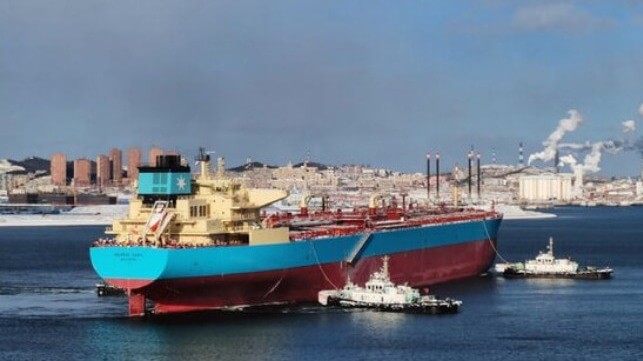Maersk Tankers Looks to Lead Industry with Order for Large Ammonia Tankers

After having left ship ownership to become a manager and pool operator, Maersk Tankers along with investment partner Mitsui & Co. looks to lead the tanker sector into ammonia transportation. The company, which is owned by A.P. Moller Holding and has Mitsui as an investor in Maersk Product Tankers, placed the largest tanker order to date in the ammonia sector.
Maersk Tankers reported that it has placed an order with Hyundai Samho Heavy Industries in South Korea for large ammonia carriers. It includes a firm order for four tankers as well as options for up to six additional vessels. Maersk Tankers will operate the vessels and expects them to enter the charter pool by 2027 with Mitsui as a co-investor in the first four vessels. HD Korea Shipbuilding & Marine Engineering, the holding company for the shipyard, reported the value of the four-vessel order at $432.4 million.
Maersk highlights that many of today’s clean ammonia projects under development will require seaborne transportation. Ammonia is poised to become a fuel source as well as a carrier for hydrogen which can be released through a cracking process. Maersk Tankers looks to become a first mover in the sector responding to the market which is looking for solutions to transport larger volumes of ammonia.
“Concrete actions are needed for the tanker industry to progress the energy transition, and in Maersk Tankers, we want to play our part in making transportation of clean energy a reality,” said Tina Revsbech, CEO of Maersk Tankers.
The newbuilds will have a capacity of 93,000 cbm, which will be among the largest ammonia carriers in operation, capable of carrying a full cargo of ammonia. The first four VLACs are due to be delivered between late 2026 and the second half of 2027.
Maersk Tankers reports it is working with MAN Energy Solutions and Hyundai Heavy Industries’ Engine Machine Division (EMD) to make the vessels capable of running on ammonia. However, a decision to install ammonia-capable engines requires both regulatory and customer support.

Hyundai's rendering of large ammonia gas carriers
Both companies look to leverage their experience in gas tankers to develop this new segment of the market. Maersk Tankers highlights it was an early entrant into LPG and ammonia shipping starting in 1972 and continuing till it sold its gas tanker business in 2013. This year, the company again began managing gas tankers and reports it has nearly 30 very large gas carriers VLGCs now under management. Maersk Tankers manages a fleet of 150 vessels with 40 pool partners.
HD Korea Shipbuilding has been working on the development of designs for large ammonia gas carriers, having previously received design approvals from leading classification societies. Hyundai is building the segment reporting in September an order for four 88,000 cbm ammonia tankers with two to be delivered to EPS while the other two are being built for Greece’s Capital Management and will be operated by EPS. The deliveries are anticipated to begin in the second half of 2027 and each contract includes an option for one additional vessel.
Hyundai highlights that its shipbuilding operation has won approximately 61 percent of the orders for ultra-large LPG and ammonia carriers placed this year. They have a backlog of 23 ships from a total of 38 orders placed for gas carriers. In total, Hyundai’s shipbuilding companies have received orders valued at $15.74 billion in 2023 for a total of 154 vessels and a floating offshore production unit. HD Korea Shipbuilding reports that the orders represent more than 138 percent of its yearly target.
